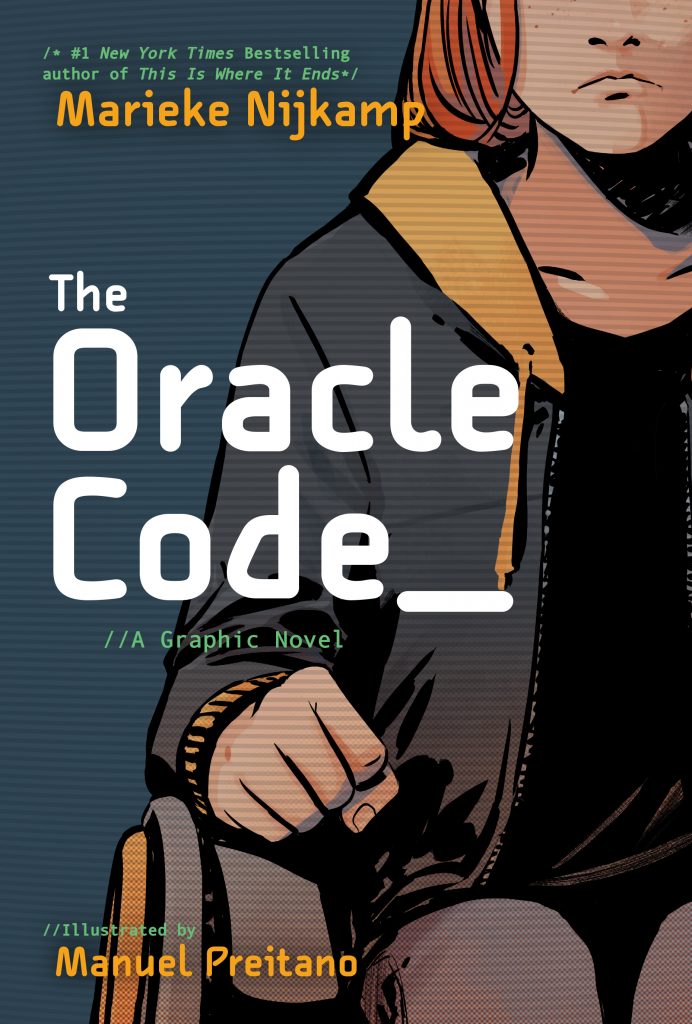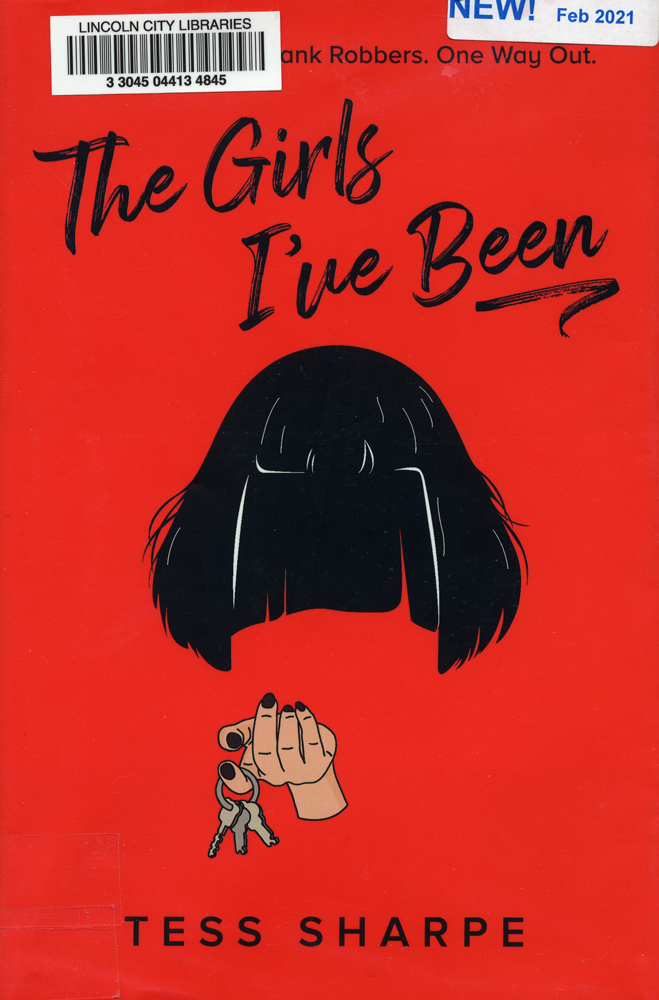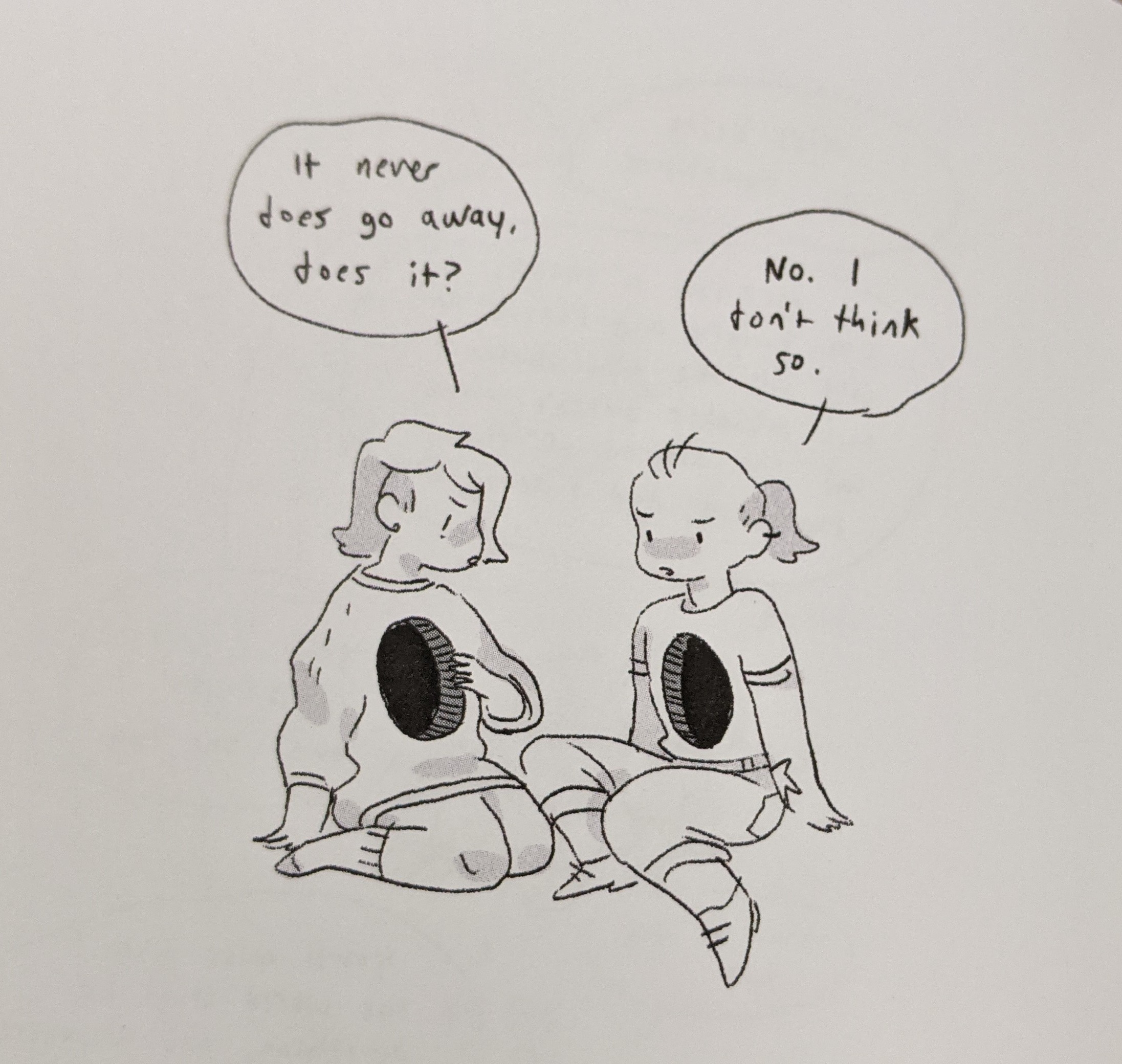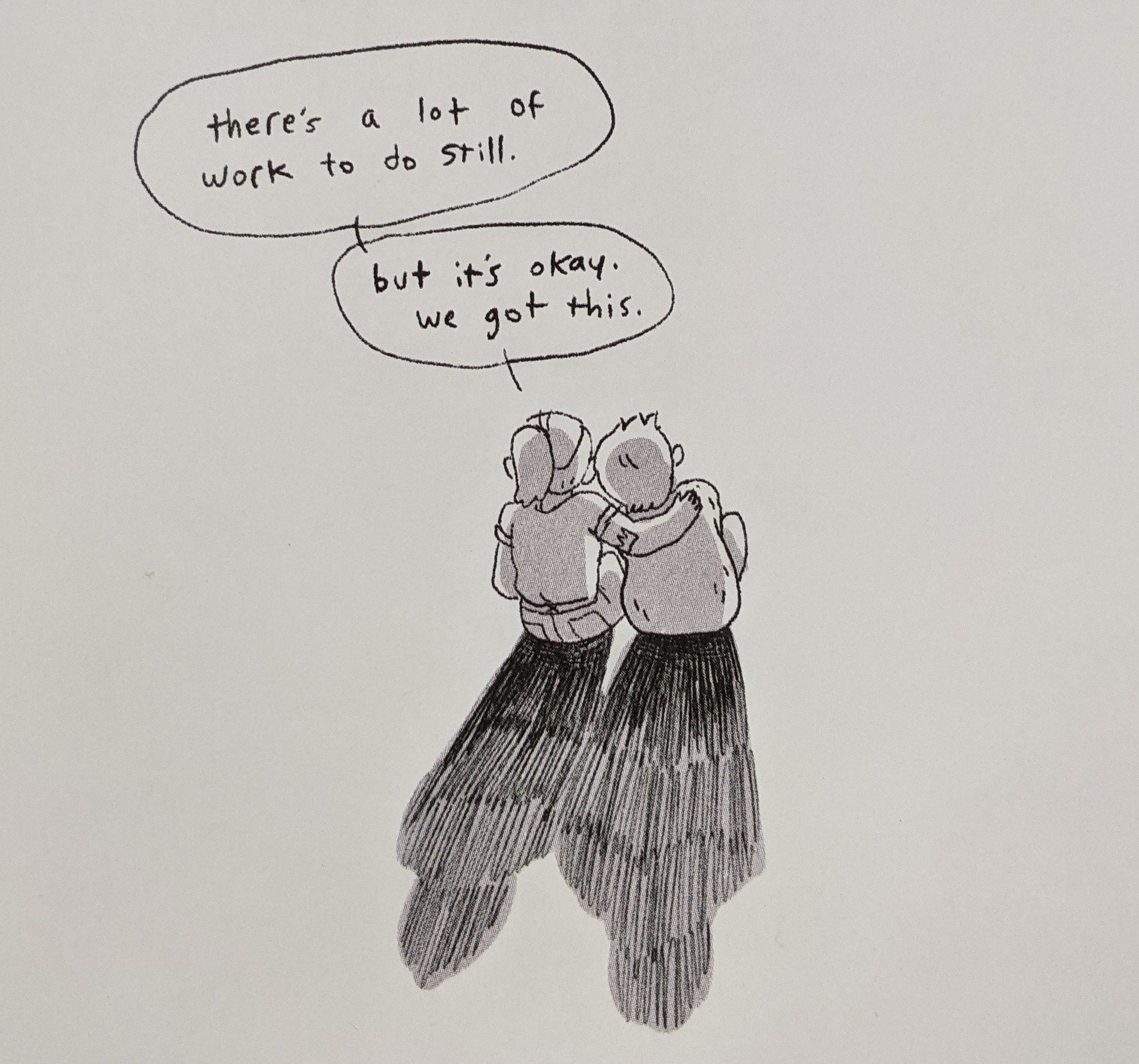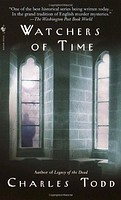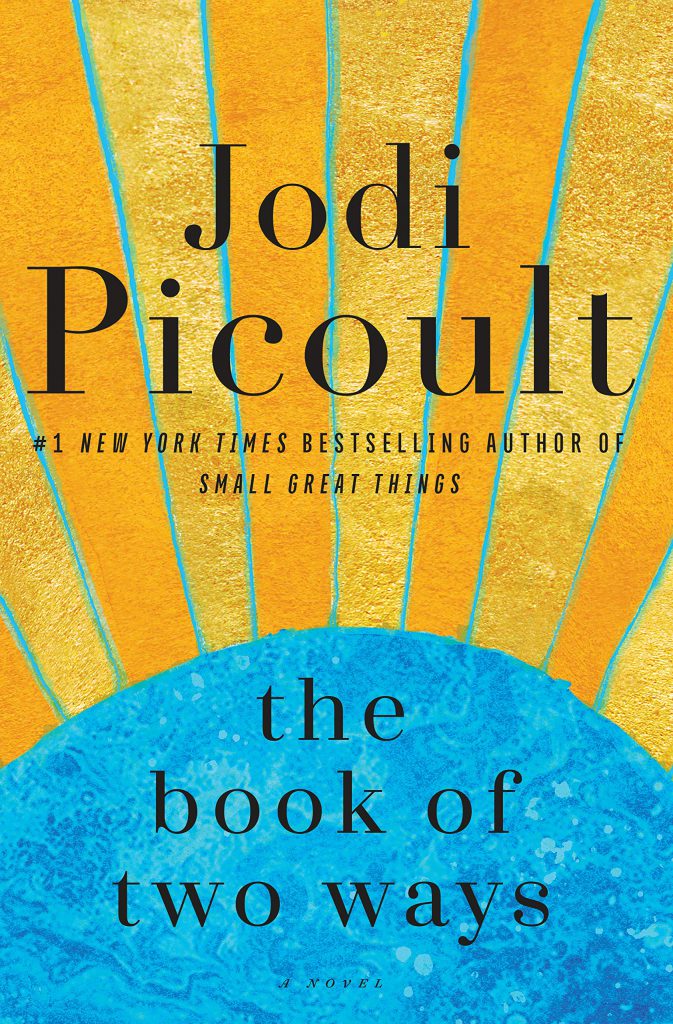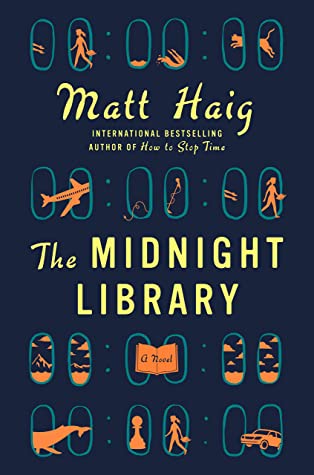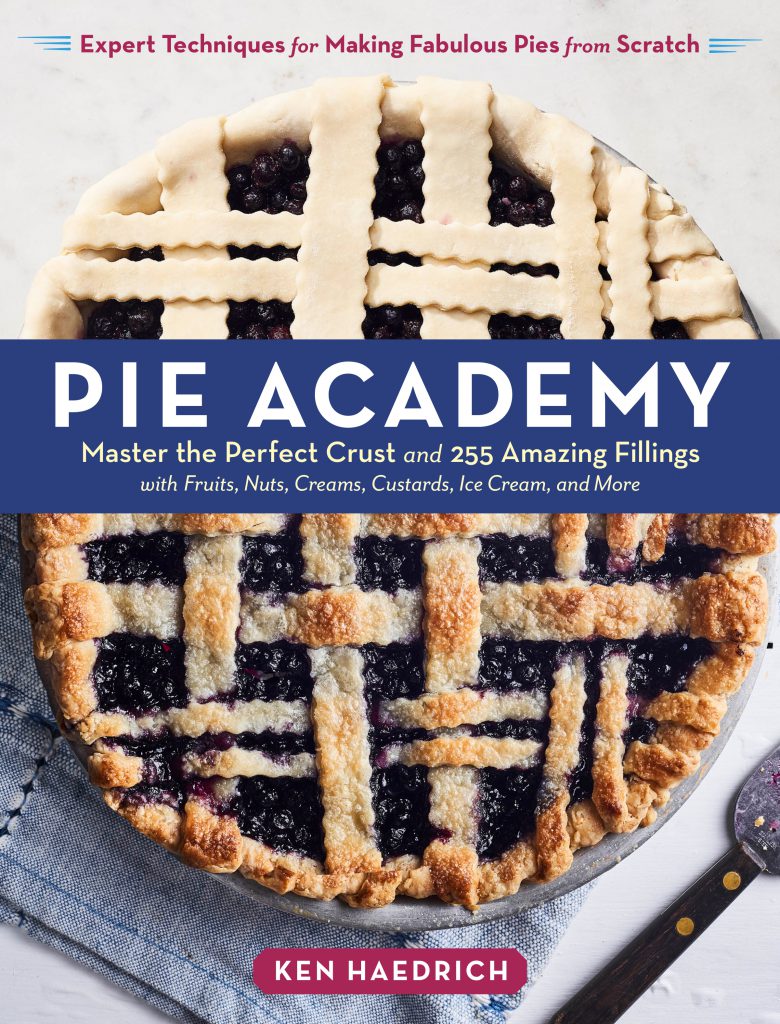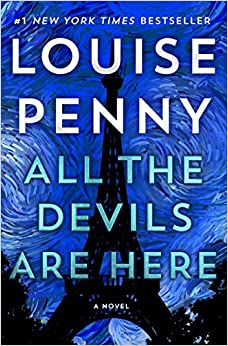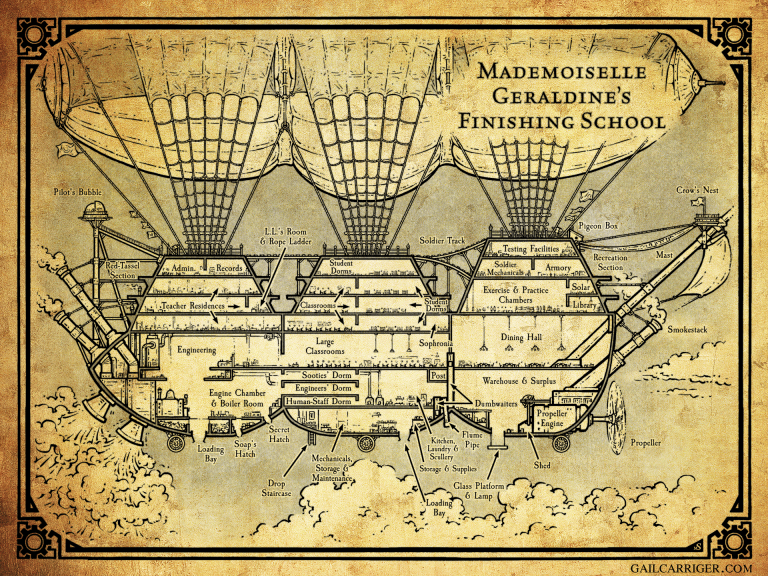Search the Blog
Categories
- Books & Reading
- Broadband Buzz
- Census
- Education & Training
- General
- Grants
- Information Resources
- Library Management
- Nebraska Center for the Book
- Nebraska Memories
- Now hiring @ your library
- Preservation
- Pretty Sweet Tech
- Programming
- Public Library Boards of Trustees
- Public Relations
- Talking Book & Braille Service (TBBS)
- Technology
- Uncategorized
- What's Up Doc / Govdocs
- Youth Services
Archives
Subscribe
Tag Archives: Friday Reads
Friday Reads: The Oracle Code
I have discovered that part of my pandemic coping is more quick reads. For me, that means comics and graphic novels. Looking back over the last year, most of my Friday Reads have been graphic novels. Here’s another one I really enjoyed.
I like when I’m surprised by a book that isn’t what I thought it was going to be. The Oracle Code, written by Marieke Nijkamp and illustrated by Manuel Preitano, is a new story about Barbara Gordon, aka Batgirl, aka Oracle. But, it’s definitely not what you may be expecting. It’s not your typical superhero story.
Teenager Barbara Gordon has recently been accidentally shot and is paralyzed from the waist down. Her father, Commissioner Jim Gordon, has sent her to the Arkham Center for Independence to help her adjust to life in a wheelchair.
Barbara is struggling with her new situation, and at first pushes away any of the other teens who try to befriend her, clinging to her previous life and her friend outside the Center, Ben. But slowly, as she participates in her therapies and the other teens refuse to give up on her, she becomes more confident and makes new friends. The other teens at the center are a very diverse group, showcasing a range of disabilities, races, and genders.
But, something’s not right at the Center. Children are disappearing – the staff claim they have just moved on to other places for their therapy. But, Barbara is suspicious – her instincts tell her that they are being lied to.
And….is that a ghost?
Using her skills as a talented computer hacker, and with the help of Ben and the other residents at the Center, Barbara attempts to solve the mystery of what’s happening to the children. At the same time, Barbara works on her own puzzle of who she was, and who she is now.
The Oracle Code is an empowering story about Barbara overcoming her feelings of grief and anger to become a strong, independent heroine.
Posted in Books & Reading, Youth Services
Tagged #FridayReads, Friday Reads, FridayReads
Leave a comment
Friday Reads: The Girls I’ve Been by Tess Sharpe
Nora (17) (not her real name) was rescued from her con-artist mother five years ago by her older half-sister, Lee. Nora was part of each con her mother planned and carried out. She was Rebecca, Samantha, Haley, Katie, and Ashley. Being each one taught her things that she will soon need. Five years of living with her sister, going to therapy, going to school, her boyfriend Wes, who is now her ex-boyfriend, may have taken some of her edge off, or not.
Nora, Wes, and Nora’s new love Iris (Nora is bisexual) meet at the bank to deposit the money their fund-raiser collected. Once in the bank they find themselves in the middle of a bank robbery, and things are not going well. There are two robbers, one the brains and the other is always quick to panic. Nora will need all of her skills to keep everyone safe: her friends, the teller, the guard, and a girl who was waiting for her father.
Each chapter heading notes the time, how long they have been captive, and what “weapons” they have. Some gruesome things happen, both in the past and in the present. Nora, Wes, and Iris were each abused as children and this situation brings out some of that. They each have found a way to survive and heal.
Tension is strong throughout the book. Nora maintains her cool and manipulates the robbers when she can. When one tactic doesn’t work, she changes to another. It is clear that everyone is in danger. She exudes confidence, but inside she knows everything can quickly go wrong.
Flashbacks occur regularly, filling the reader in on what Nora did with her mother, as she was each of the girls her mother created for her. These pages are slightly gray to stand out from the rest of the book.
This book will pull you in and not let go. It has continued to be on my mind since I read it earlier this month. It received a starred review from Booklist and Kirkus. It is written for grades 9 and up, and new adults might also pick it up off the shelf.
Sharpe, Tess. The Girls I’ve Been. G. P. Putnam’s Sons, an imprint of Penguin Random House LLC, 2021.
Friday Reads: The Fire Never Goes Out: A Memoir in Pictures by Noelle Stevenson
“You’ll be okay. But you’ll lose some things” (35).
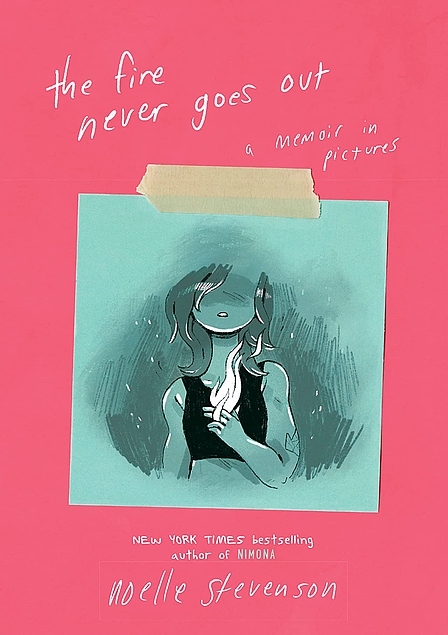
I believe it was early 2014, late into the last dregs of winter in my freshman year of college, when I got into webcomics. The serial format meant something to look forward to each week (in an era where Netflix “bingeing” was starting to take off), and there was a diverse buffet to choose from — not just in style, but in content. I’m not certain how I stumbled across Noelle Stevenson’s Nimona — then a webcomic, still running in series, now a New York Times bestseller and National Book Award Finalist — but I did, and it shaped me, and when I saw the published, physical copy in my college’s library my senior year I carefully lifted it down from the shelf, held it in my hands and, well, cried.
The Fire Never Goes Out: A Memoir In Pictures is Stevenson’s story, from 2011 (before Nimona) to 2019. Stevenson — who uses she/her pronouns in the book jacket; her Twitter bio currently states that she accepts any pronouns — compiles comics and reflections from each year, centered around the idea of an inner fire — something that drives her, plagues her, inspires her, and burns her out at the same time.
While the book almost felt, at times, more like a scrapbook than a memoir, Stevenson crafts a poignant, moving, and powerful journey that is both intimately personal and welcoming in its relatability. The scrapbook/memoir is semantics, perhaps, on my part; however, I think I would have liked more of Stevenson’s current-self writing summaries of their past years, partially because I adore their writing style and partially because I felt a little cheated of original content (the book does contain new material); however, I also understand why they chose to recycle past blog entries. Besides, when I was honest with myself, even though I dimly remembered following Stevenson somewhere on the interwebs back in the day, it’s not like I actually remembered their yearly summary posts.
In his highly recognizable art style, Stevenson reaches out to his younger self and says, Hey — things suck, but you’re stronger than you know. You make it. It’s the “things get better” speech I needed to hear — that I, too, wish I could go back and tell my younger self — without the everything gets better. Not everything does. Things still suck. The fire never goes out. Some holes never get filled. Some scars don’t fade all of the way. We keep going, and growing, anyway.
Overall, like most graphic novel-style books, this is a quick read. And it isn’t all the heavy-hitting solemnity of finding one’s way through young adulthood, mental illness, and burnout; there are also moments of levity and love and humor. Stevenson finds herself, falls in love, and shares her art with countless people. The memoir ends up being a balanced, realistic piece, filled with beautiful sketches and art.
If you liked Nimona, you’ll like this memoir. And if you haven’t yet read Nimona, pick both graphic novels up and enjoy two good afternoon reads as we enter brighter days.
Stevenson, Noelle. The Fire Never Goes Out: a Memoir in Pictures. Harper, an Imprint of HarperCollins Publishers, 2020.
Friday Reads, Watchers of Time, by Charles Todd
First thing I do in the library is scan the new books shelves, and last time, I picked up a title, Watchers of Time by Charles Todd (fifth in the series.) I recalled part of a review I’d read about a Scotland yard inspector who had been an officer in World War I, and had returned home, with a ghost in his mind. I knew this wasn’t the first of the series when I picked it up, but what little I could remember of the review, plus the intriguing blurb, made me take it home.
This is more than escapist reading. Mr. Todd has done his research on both the after effects of World War I on both the civilian population, and the returning soldiers, such as Inspector Ian Rutledge. Hamish MacLeod, the “ghost” in his mind, was one of the men he had under him. He also suffers from “shell shock”, and claustrophobia. So many of the men who returned were shunned because of “shell shock” or that the part they played in the war was not “sporting.” There was still an extreme difference between the perception of war, and the reality of modern war in the civilian population.
The other thing that elevates this from the usual mystery are the wonderful descriptions of the countryside, set in Norfolk County. This section of the country is called the Broads, and is marshland, where the sea has receded & filled in with only a small tidal river. It is Autumn, but still early enough for some flowers to be in bloom. The town, Osterly, was once an Edwardian vacation town, in a small way, but when the ocean receded, the vacationers stopped arriving.
The Bishop in Norwich wishes Scotland Yard to check the work and circumstances of a priest’s death. This was still a shocking event in a small town in England. Inspector Rutledge is sent to check into the progress being made in the case, and why the Bishop wants an Inspector to check into it. While everyone believes the local inspector to be competent for the job, there are still questions in Inspector Rutledge’s mind. There are also some odd connections between the case and the sinking of the Titanic.
Watchers of Time; An Inspector Rutledge Mystery, Charles Todd, Bantam Books, 2001, 978-0-553-58316-8, paperback.
Friday Reads: The Book of Two Ways by Jodi Picoult
If I were still a reader’s advisor, I would prescribe this book to anyone about to make a major life decision. Someone who is rifling through the archives of life, pondering what might have been if life had pivoted in another direction. There has been plenty of time for this during Covid, so it is sure to be a good read! With one caveat I will mention towards the end of this review.
This book opens with Dawn Edelstein plummeting to the ground in a crashing plane. She is a death doula, working with the dying as they transition out of life. With a husband and daughter at home, she hadn’t expected to shepherd herself along this journey quite so quickly. As Dawn braced for impact, she thought of Wyatt, an Egyptologist she worked with in graduate school.
Dawn survived, but she crash landed in a midlife crisis. The airline offered to send the survivors anywhere they wanted to go in the world. With a head full of memories and the clothes on her back, Dawn went to Egypt to find the one that got away. So it begins.
I assure you, this is not a supernatural story. Dawn is indeed still alive, she does go to Egypt, and Wyatt is doing a dig during the off-season. As it turns out Dawn is a former PhD student studying the Book of Two Ways, an ancient Egyptian map to the afterlife.
As Dawn digs into her past, she uncovers pieces of life that are not so rosy. The death doula has a few skeletons in her closet. Again not supernatural. She didn’t kill anyone and her murdered lovers do not come back to haunt her. The fact that I feel the need to reassure you of this probably speaks more to the other books I have been reading than this one.
Anyway, as the real Book of Two Ways shows there are multiple paths to the afterlife, this book proves that life has options too. The hard part is choosing what will lead to your most fulfilling life. What does that look like? There are too many paths and they all ultimately lead to death. Death permeates this book like a promise.
Alternating between darkness and light, The Book of Two Ways proves that you only live once. So please, go on a journey with Dawn into the past. It’s the only way to make a better future. I won’t say whether she winds up with the one that got away. That’s part of the journey.
So here’s the caveat. Dawn is a former PhD. She speaks ad nauseam about Egyptology, and a bit about quantum physics. If your eyes gloss over and you skim over the meat of these sections, the world is not going to end. Often, when I talk to real PhDs, this sometimes happens. Their eyes light up and words spill out to form a new theory about the world. The info. dumps about Egyptology are realistic, but make this book about you. Read what matters to you.
The Book of Two Ways carves out a path to explore life. There is no point in ruminating on how it ends. Find yourself between the pages. Choose the experiences you truly want to live.
Posted in Books & Reading, General
Tagged #FridayReads, Books & Reading, Friday Reads, Friday Reads, FridayReads
Leave a comment
Friday Reads: The Midnight Library by Matt Haig
“Between life and death there is a library,” she said. “And within that library, the shelves go on for ever. Every book provides a chance to try another life you could have lived.”
This is the idea behind The Midnight Library by Matt Haig. I debated how to write this review without giving too much of the story away and a pro/con list seemed the best way to do that.
Pros:
-An easy read. I had it finished in just a few sittings.
-There are some beautifully written passages that just envelop you.
-The characters are very relatable.
Cons:
-Those beautifully written passages? For me they sometimes felt misplaced and would totally take me out of the story.
-The plot leads you in such a way that you don’t necessarily want to take the time to read everything fully, you just want to get to the next plot point.
-Everything about the book feels very unoriginal and overdone. It seems more like something you’d see someone write for a short story class in college, not from a well-known author.
During the pandemic reading, for me, has become more of a chore than being enjoyable. For every book I do manage to finish there are ten that I don’t, or don’t even really start. It was nice to find a book that caught my attention enough to stick with it and even with all its faults it wasn’t a burden to read.
Would I suggest rushing out and buying it? No, but if you happen across it in the library someday maybe check it out.
Posted in Books & Reading
Tagged #FridayReads, Books & Reading, Friday Reads, Friday Reads, FridayReads
Leave a comment
Friday Reads: Conventionally Yours, by Annabeth Albert
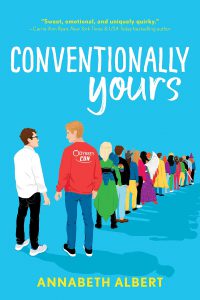
Since last Sunday was Valentine’s Day, I thought I’d select something romantic for this week’s Friday Reads. My choice: Conventionally Yours, by Annabeth Albert. If you’re a fan of the “enemies to lovers” and “forced proximity” romance tropes, this might be right down your alley. If you enjoy reading about gamer culture, even better!
Conventionally Yours falls neatly into the new adult romance subgenre. Conrad (21) and Alden (23), the two protagonists, are both navigating fraught transitions between college and uncertain adult futures—Conrad because he had to drop out of college after his parents cut off financial support when they found out he was gay; Alden, who’s neurodiverse, because of failed attempts to get into medical school, followed by pressure from his mothers to come up with immediately-actionable alternate plans.
Conrad and Alden’s initial interactions are at a local game shop, where both participate in a small group devoted to playing the popular card game, Odyssey. At this point, they don’t get along at all. Conrad views Alden as rigid, rules-bound, and no fun, whereas Alden sees Conrad as a popular but irresponsible college drop-out working a series of dead-end jobs. Then, due to a cascade of chance circumstances, and to their mutual horror, they wind up stuck together in a car on a cross-country road trip to “Massive Odyssey Con West,” where they’ll compete for a seat on the pro Odyssey tour—an outcome that both view as a miracle solution to their near-term problems.
While this might seem like a recipe for disaster, in true romance fashion the drive time provides opportunities for the two to get to know each other better, correct misconceptions, and develop feelings. Alden grows indignant on Conrad’s behalf when he learns his family disowned him, and when he realizes Conrad is skimping on food because of tenuous finances he begins “accidentally” ordering more than he can eat in order to share. Conrad, for his part, really listens when Alden lashes out at him after he makes caustic comments about Alden always trying to be perfect. For the first time, Alden feels like someone understands how imperfect he feels after his moms spent years trying to get him diagnosed and fixed. And for the first time, he feels acceptance: “You’re just you. Just Alden. It’s who you are. Changing any of it isn’t necessary,” Conrad assures him.
Though Conrad and Alden experience a détente, coupled with growing attraction and affection, during their time on the road, there is still plenty of drama and tension to be resolved, not least of which is competing against each other in the tournament after learning how much the other needs the win. However, as you can probably guess given this is genre romance, there are happy resolutions in store for Conrad and Alden, both individually and as a couple, in the end.
Albert, Annabeth. Conventionally Yours. Naperville, IL: Sourcebooks Casablanca, 2020.
Friday Reads: Pie Academy by Ken Haedrich
Pie, pie, me oh my.
Between the historic snowfall last week and the upcoming arctic blast, it’s the perfect time to stay in a warm kitchen baking all the wonderfully lovely pies. Pie Academy: Master the Perfect Crust and 255 Amazing Fillings with Fruits, Nuts, Creams, Custards, Ice Cream, and More by Ken Haedrich is a great resource for home bakers at any skill level. “All you need is fat, flour, salt, and sometimes sugar” (p. 13).
The book starts with the basics of making pie – the tools, the ingredients, and the dough. Pie doesn’t require anything fancy to get started, just practice. His step-by-step instructions for making the perfect piecrust has been extremely helpful. This mini class on crust is followed by an entire chapter of twenty-five different crust recipes, including crusts with butter, shortening, lard, crumb-style, graham crackers, and gluten-free versions.
The book then has chapters with recipes for berry, apple, fall fruit, pecan, custard, cream, hand pies, icebox pies, freezer pies, and other “oddball” pies. Classic pumpkin pie, sour cream raisin pies, brownie pies, watermelon rind pie, strawberry-rhubarb crumb pie, Ritz mock apple pie, polenta pie, nectarine and blueberry-lime pie…there are so many detailed recipes with gorgeous pictures. Included in the recipes, there are “Recipe for Success” sections that offer additional tips and tricks from Haedrich. Throughout the book, there are extra pie trivia or history bites, as well as other lessons, such as how to mail a pie or the differences between apple types. Lastly, there’s a trouble-shooting guide in the back where Haedrich answers some common issues like cracked dough or runny filling.
Even if you’re not a newbie pie baker (like me), there are so many fillings, crust variations, and decorations included for more experienced bakers to find something new.
Haedrich, K. Pie Academy: Master the Perfect Crust and 255 Amazing Fillings, with Fruits, Nuts, Creams, Custards, Ice Cream, and More. North Adams, MA: Storey Publishing, 2020. Print.
Friday Reads: The God of Small Things by Arundhati Roy
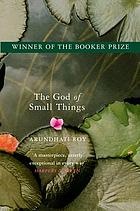
I just started The God of Small Things by Arundhati Roy, and I’m so glad I did. Over a foot of snow on the ground outside calls for some entertainment set in warm climes. Summer in India reads really well right now.
I bought this book a few years ago, when it was required for a class I was taking, and then the school changed the professor for the class, and that new professor changed the books. This book was the one from the original slate that I was looking forward to the most. I was happy to take it off the shelf this week. It’s the story of twin boys and their connection to each other, as their family, which is already going through some things, welcomes visiting relatives who have their own problems. It’s lush and full of surprises from the beginning, and yet never goes out of rhythm.
This is Roy’s first novel, and it follows her training as an architect and her work as a production designer. There’s a lot going on in this book, but we’re in good hands. Roy knows her details and characters and shares them with us luxuriously, but never overwhelms us. Her vision is clear, and her characters are wonderfully flawed, and their relationships are familiar, yet unexpected, in their complexity.
And of course, The God of Small Things won the Booker Prize, which is always a good recommendation. If you like well-planned sprawling stories about families full of interesting characters, and not a snowdrift in sight, you will want to check it out.
Roy, Arundhati. The God of Small Things. New York: Random House, 1997. Print.
Friday Reads: All the Devils are Here by Louise Penny
My colleague Tessa Terry reviewed the Inspector Gamache series in 2018. This book is the latest (#16) in the series and takes place in Paris. It begins with the entire family walking home from a bistro dinner only to witness Armand’s godfather; Stephen Horowitz, violently hit and run over by a van. To Armand’s eyes, this is no accident, but the French Police aren’t convinced.
Series readers love the stability of spending time with beloved characters in a familiar place. This book leaves the usual setting of Three Pines (a small town in Quebec) and takes place primarily in Paris. French names were a challenge, keeping track of who was friend or foe, which was part of the plot twist. Working out of his jurisdiction Chief Inspector Gamache relies upon his librarian wife, Reine-Marie, a local librarian, and his family members to help discover the truth about his godfather’s attacker.
Tessa mentioned the narrator Ralph Cosham in her first review. From Audiofile Magazine: We are saddened that Ralph Cosham passed away in September 2014. His voice for Gamache is described as one that “combines British intellectual with a Frenchman’s warmth … it’s as if those two got married–and Gamache would be their son.” From Louise Penny’s newsletter: “after this tragic loss, we finally have our new voice for the books … he’s a British actor named Robert Bathurst, best known in North America for his role in Downton Abbey.” I was delighted that Bathurst recently beat Tom Hank’s in this past year’s Audie Awards for best Male Narrator for his recording of Louise Penny’s Kingdom of the Blind. For a devoted series reader/listener, the narrator is as important as the text. I can personally vouch for both narrators.
If you are looking for some Pandemic reading (or listening), that will take you away from your living room to a small Canadian town with colorful characters, look no further. Here is the series listing if you prefer to read them in order.
Penny, Louise. All the Devils are Here Minotaur Books. 2020.
Friday Reads: Mistress of the Art of Death by Ariana Franklin

Historical Fiction meets Murder Mystery is always a good read in my book. In this case the setting is Medieval Europe, more specifically Cambridge, England. Our heroine is Adelia Aguilar, a trained doctor and what we would call a medical examiner. Rare and heretical for the time, she must pretend to be an assistant and translator for her long time Muslim protector, Mansur. Think Rizzoli and Isles, but with knights, monks, and convents.
Four children have been brutally murdered in Cambridge. The townspeople have accused the local Jewish community of the crimes and forced them to flee. The disruption to King Henry II’s tax revenues leads him to ask for outside help from the King of Sicily. Thus our story begins with Adelia’s summoning from the Salerno School of Medicine.
If you love procedural drama intertwined with historical facts, this is the book for you. Even better, it’s a series of five books.
Franklin, Ariana. Mistress of the Art of Death. G.P. Putnam’s Sons. 2007.
Posted in Books & Reading
Tagged Ariana Franklin, Book Review, Friday Reads, Mistress of the Art of Death
Leave a comment
Friday Reads: Prairie Forge by James Kimble
James Kimble’s Prairie Forge is the 2021 One Book One Nebraska selection. Prairie Forge is the story of a remarkable undertaking, launched in Nebraska, that inspired replication throughout the United States. With the United States entering World War II and the urgent need for resources, iron production was needed in ever-greater quantities for production of ships, planes, vehicles, weapons, and many other military necessities. Scrap metal was a critical need. That was the impetus for the Nebraska scrap metal drive of 1942.
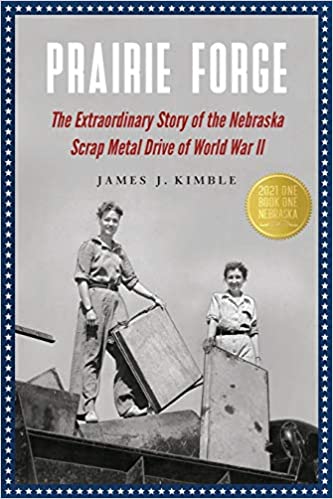
Henry Doorly, Omaha World Herald publisher, inspired by a challenge from his wife, Margaret Hitchcock Doorly, initiated a scrap metal collection project in Omaha. With motivation and dedication, Doorly developed a plan to encourage Omaha residents to donate scrap metal for the war effort. Committing the resources of the Omaha World Herald and his staff, Doorly initiated and championed the effort that expanded across Nebraska.
While not initially expected, Doorly’s plan grew from its beginning in Omaha to spread statewide. Competition among counties, businesses, communities and schools resulted in 67,000 tons of scrap metal gathered within a three week period. It wasn’t easy; there were numerous challenges and obstacles to overcome. Success resulted from motivation, inspiration, persistence, commitment to the cause, and the competitive spirit that led Nebraskans to meet the challenging goals set for the project.
The Nebraska plan and its achievements became a model for a national scrap metal drive. Ultimately, the national effort resulted in volunteer “scrappers” collecting 5 million tons of scrap. Professor Kimble contends that “the Nebraska Plan was successful because it brought the war home to civilians, enabling them to participate directly in the battle as something akin to combatants. Students, retirees, housewives, blue-collar laborers, and even children felt themselves becoming integral parts of the war.” Leadership came from many people and organizations across Nebraska, and notable were the contributions of news outlets that provided information for community organizers and other volunteers.
The scrap metal drive may be an overlooked footnote in World War II history books, but it was a significant contribution to equipping the war effort and the eventual outcome.
One book reviewer remarked that Prairie Forge should be in every Nebraska public library. Nebraskans are encouraged to read this remarkable book.
James J. Kimble, Ph.D., is Professor of Communication, College of Communication and the Arts, Seton Hall University. An expert in the communication field, he is the co-producer of Scrappers: How the Heartland Won World War II, a feature documentary on the 1942 scrap drives. James Kimble’s hometown is Norfolk, Nebraska.
Kimble, James J. Prairie Forge: The Extraordinary Story of the Nebraska Scrap Metal Drive of World War II. Bison Books. 2014,
Friday Reads: Clandestine
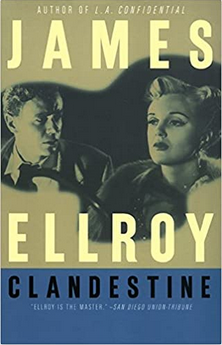
“I’m a take-me-as-l-am person, and all the rest is water under the bridge. You can’t change yesterday any more than you can predict what’s gonna happen tomorrow.”
–Glen Campbell
Recently, I watched the documentary film Echo in the Canyon, which triggered a chain reaction of reading and listening activity. On the listening level, it was a revisit to Pet Sounds by the Beach Boys and a few others. Arguably, one of the best albums of all time, and specifically, the song I Just Wasn’t Made For These Times strikes a chord for me. For the record, I think it’s a disgrace that Mike Love is touring under the Beach Boys moniker, sans Brian Wilson, but I do acknowledge that Mike’s contributions have been underrated. In addition, the amount of those contributions certainly can be up for debate, but at this point, I’m not sure it matters much. Having said all this, the book reading reaction to Echo was first to pick up yet another music biography. This time, I gravitated to the latest Neil Young book, Special Deluxe: A Memoir of Life and Cars. Likely, this will be written about in the future to add to my FR musician catalog of Tom Petty, Prince, the Wrecking Crew, and the disaster at Altamont involving the Rolling Stones. Arguably, the attraction to Neil was threefold: (1) the coverage of Buffalo Springfield in Echo; (2) the large absence of Neil from it; and (3) the iconic sideburns, which have remained constant over the years. Now, in the world of unique tidbits of one’s appearance, the sideburns are a difficult animal. The lamb chops could arguably have been unique at one point in time for many individuals (and they certainly are for a guy like Neil), but like most everything else in today’s world, are now over-done. In all seriousness, in order to really pull this off, you need the hairstyle to go with the burns, like this example. Note to self: Scour thrift stores for pastel leisure suit to go full tilt – this could be the originality that sets my appearance over the top. For more inspiration check out Queen’s Gambit for applicable ideas for any hip ladies and gents. For the cat writing this (me), the current COVID look is closer to John Quincy, minus the bald spots. Wa-wa.
Now, having decided to pass on writing about Neil, I picked up another period writer from a time which if I could teleport, I certainly would. So, as the “The Cowboy” from Mullholland Drive says, let’s get right down to it. That writer is James Ellroy and the book is Clandestine. When I say teleport, the time period seems cogent, but Ellroy’s portrait of L.A. certainly is bleak. Clandestine follows many of Ellroy’s other narratives, in this case LAPD cop Fred Underhill. The themes in Ellroy’s L.A. are similar: Murders of women, corrupt cops, hopheads, and other “degenerates.” This is familiar Ellroy territory, and anyone having read anything by him will feel right at home. It doesn’t make the mysteries (the book follows multiple murders) any less interesting, just the look and feel remain constant. There’s also the cross-pollination of some characters you may recognize from L.A. Confidential, such as the ruthless and crooked Lt and then Captain Dudley Smith. In actuality, Clandestine was Ellroy’s second work (after Brown’s Requiem), published in 1982. It’s easy to see his progression from Clandestine to his impeccable L.A. Quartet (The Black Dahlia, The Big Nowhere, L.A. Confidential, and White Jazz).
Now for a brief synopsis: In Clandestine, the story follows the main character, Fred Underhill, and his relationships. His relationship with the LAPD, with his partner, with Dudley Smith, his DA lover, and of course the victims and suspects. Clandestine describes the secret program run by Smith, to conduct investigations and interrogations as a part of secret program of LAPD cops, and has another hidden meaning. But this story is quite a bit more about the change that takes place among Fred Underhill, over a period of time as he investigates murders. This book isn’t Ellroy’s best work by any stretch of the imagination, and the territory has been covered in a more entertaining fashion in the L.A. Quartet. However, if you like his writing style and a decent mystery, you may find this book to be a good read.
Ellroy, James. Clandestine. Avon Books. 1982.
Friday Reads: Bob by Wendy Mass

Confession: my son is a reluctant reader. This pains me both as a mother and a librarian. He was introduced to books as an infant, visited me at the library, was (and is) read to constantly, and there are books everywhere in our house. He can read just fine; it’s just not his preferred hobby. He’ll do whatever it takes to get through his daily 20 minutes of assigned reading and not a minute more. This is obviously a me-problem; what librarian doesn’t want their kid to know the joy of reading?
So I was pleasantly surprised when he voluntarily brought home a middle-grade novel this week. He will often check out a book about animals or cars, or just choose to read picture books aloud to his sister. But this week, he handed me Bob by Wendy Mass. “I heard it’s a good story.” Indeed, it is – I read it in early 2019 and it was a 2020/21 Golden Sower nominee. We are reading a couple of chapters a night (don’t want to exceed that 20 minute limit!).
Bob is the story of a small green creature, dressed in chicken suit, waiting not-so-patiently in a closet for his friend to return. That friend, Livy, has been gone for 5 years and when she does show up, she doesn’t remember Bob or the promise she made to him when she was 5 years old – to help him find his home. Now that they are reunited, they set off to figure out the mystery of Bob.
Bob may or may not kick off a lifelong affinity for the written word, but for this winter break at least, I’m going to savor each page read aloud by my favorite reluctant reader.
Mass, Wendy. Bob. Feiwel & Friends, 2018.
Posted in Books & Reading, General, Youth Services
Tagged #FridayReads, Book Review, Friday Reads, GoldenSowerAward, middle grade, read aloud, Wendy Mass
Leave a comment
Friday Reads: Shadow of the Batgirl
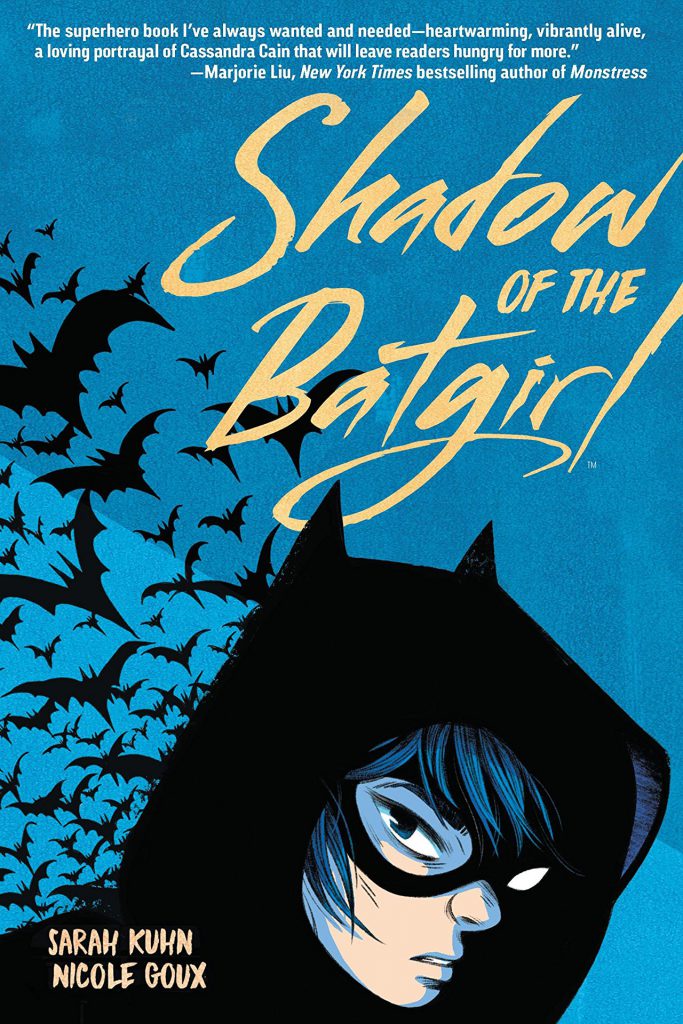
This probably isn’t the Batgirl you think it is.
Shadow of the Batgirl, written by Sarah Kuhn and illustrated by Nicole Goux, is another re-imagining of an iconic origin story, this time of the lesser known Batgirl, Cassandra Cain. I’ve read the previous comic series about Cassandra, and I’ve always enjoyed her more edgy style.
This version of Cassandra Cain is similar to her original story, but a bit lighter in tone. I still really liked this new take on her beginnings and evolution into Batgirl. And much of the story takes place in Gotham Public Library, which makes it a perfect read for the librarian in me!
Cassandra has been raised as an assassin, and she knows nothing of the world outside of her training. During an encounter where she is supposed to kill a man, she has a startling realization about herself and doesn’t follow through with her assignment. She runs away from her former life, determined to figure out who she is and who she wants to be.
With the help of ramen restaurant owner Jackie Fujikawa Yoneyama and librarian Barbara Gordon, Cassandra learns about her own past and tries to find out what happened to Batgirl, who has mysteriously disappeared. And Barbara just happens to use a wheelchair, which readers of another Batgirl may recognize. No spoilers!
This well-written stand-alone graphic novel leaves you wanting more. I hope to see this Cassandra Cain in the future.
Posted in Books & Reading, Youth Services
Tagged #FridayReads, Friday Reads, FridayReads
Leave a comment
Friday Reads: Clap When You Land by Elizabeth Acevedo
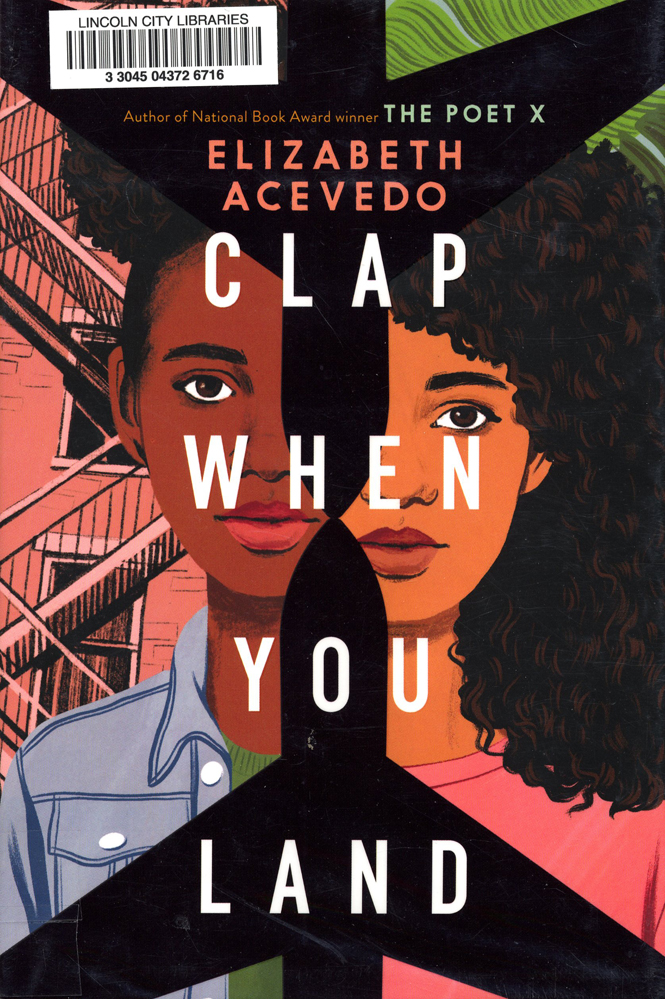
This novel is told in free verse and in the alternating voices of two almost 17-year-olds, who find out about each other and that they are half-sisters only after their father dies in a plane crash. Yahaira lives in New York with her parents and misses her father when he travels to the Dominican Republic every summer, she thinks it is for business. Camino lives with her aunt in the Dominican Republic and loves the summer since that is when her father is with her.
It includes their shock and grief at the loss of their father. The pain of overcoming the disappointment & betrayal they feel as they learn about his secret families; and realizing their futures are now at risk too.
It is also a celebration of family, and of the path to a hopefully better future for both daughters.
The author explains that it is a Dominican custom to clap when the plane lands the passengers back in the Dominican Republic.
Acevedo, Elizabeth. (2020). Clap When You Land. Quill Tree Books.
Friday Reads: War of the Foxes by Richard Siken
“Trust me. I have things to say” (14).
Poetry is a difficult genre to review. Poetry is a personal subject: for each of our bodies, there is a poetry that corresponds, that resonates and echoes with us.

Richard Siken’s Crush is my favorite collection of poetry – and one of my favorite books. I went through a period in my life when I read it once a week (on Sundays). I’ve recorded myself reading poems from Crush and sent the recordings to romantic prospects (with varying degrees of success, but that says nothing of Siken).
War of the Foxes is not Crush. There is a different amplitude about it. It is less concussive than Crush; more a stiletto knife through rib-spaces than a gut-punch (I like my poetry like a back-alley-fight — I like to come away with marks, impacted). And yet, perhaps it is not fair, I think, to talk about Foxes in the shadow of Crush (though how to separate them? there is no yolk from the white. if you do read Siken, you should start with Crush; the climax and catharsis of grief and the understanding of how he frames poetry is, perhaps, clearer in the older anthology).
So let’s talk about War of the Foxes. We begin in an art gallery. And that is what Foxes is, at the end of it, I believe: an art gallery. This may seem inactive. This is especially so if you do not particularly enjoy art galleries, have not been to an art gallery in a long time, or do not realize that while you are looking at the art, the art is also looking back. “All painting is sent downstream, into the future” (26). There’s the impression that the artist remains the active participant, the repetition of the act of creation, even as the viewer is looking (or we are). But what is the art, and who is the artist, and who is the viewer – these are the questions behind the obvious, behind the poems; “We do not walk through a passive landscape. The paint dries eventually” (6). Using something to talk about something else: this is poetry. (This is a good story). This is an exhibit on history, on war, on love. On birds. Ghosts. Paintings. “What is a ghost? What is a painting? Yes and yes, / the same answers” (42). War of the Foxes invites us to look within each frame and to see what we can find — ourselves, and maybe each other. “What’s the difference between me and the world? / Compartmentalization” (40). Connection is the art of it.
When I selected this book to review and began my post, I didn’t know that I would wake up on December 4th to the news of a new poem by Richard Siken. This is wonderful news because, in the Spring of 2019, Siken suffered a stroke and underwent a long recovery, during which he wasn’t sure he would ever be able to write again. Today, he shared “Real Estate.” I am delighted to have him back again.
Siken, Richard. (2015). War of the Foxes. Copper Canyon Press.
Friday Reads: City of Jade by Fonda Lee
I really enjoyed Jade City by Fonda Lee. While many reviewers drew parallels to the Godfather, I felt more as if I’d been transported into a somewhat different, contemporary Asian city, such as 1990s Hong Kong, Tokyo, or Bangkok. Years ago in this world, Kekon Island, and its people were in a war fought over the control of bioenergetics jade, a stone that gives the wearer super abilities, such as strength, perception, or making the body lighter. The warriors who wear jade, (called Green Bones) use it for added abilities, especially in combat. The war was settled, and foreign soldiers and overlords were defeated. Two of the heroes of that war founded families that helped control the exportation of bioenergetic jade. In the modern capital city, an added source of tension is the introduction of a drug called “Shine”, that can be used to give the ability to use jade to those who don’t have the natural ability. It also has a cost, addicting those that use it.

The characters are complex, and the source of the magic is intriguingly crafted. There is even a world stage, where events in the city and small island, make a difference, as well as influences the action in the story. The book is compared to the Godfather, and mob based movies and books. It’s also been compared to Wuxia (wooSHya) stories, wandering kung fu masters. Science and magic exist side by side, in this 20th century city. There are also family, and interpersonal relationships that helped pull me into the story, along with the awesome world building.
It is also a multiple viewpoint story, with a family with all the quirks of a real one. Kaul Sen, the grandfather, fought in the liberating guerilla war, where his son Kaul Du died. Kaul Lan, 35, the oldest grandson, is the current Pillar, leader of the clan, competent, cautious, and ambassadorial. Kaul Hilo, is the Fist of the clan, an extroverted, impulsive younger man. And their sister Kaul Shia, has come home from college abroad, with a degree in business, and determined to construct a life for herself away from clan business. A large part of clan business is the regulation of crime, especially the ownership of bioenergetic jade, only legally used by “Green Bones” Kekoneese clan members, whether they are warriors or lawyers, or businessmen. This jade, only found and mined on Kekon island, grants those attuned to it to use powers verging on magical, strength, lightness, perception, healing, to those who are trained to use it. It is only a stone, to the Abukei, indigenous to Kekon. The rest of the world, it is used by special armed forces, with the help of a drug called “Shine.”
The family itself has enough conflict for a novel, but the jade being mined is not all reaching the Kaul clan. The Ayt clan is trying to consolidate all the clans in their own. Violently, for the most part. The island is still not free from the foreign interests that they warred in an earlier generation.
Jade War, is the second title in the trilogy, and is already out.
Posted in Books & Reading
Tagged asian writer, Fonda Lee, Friday Reads, Serial Fantasy, urban fantasy
Leave a comment
Friday Reads: The Rational Optimist: How Prosperity Evolves by Matt Ridley
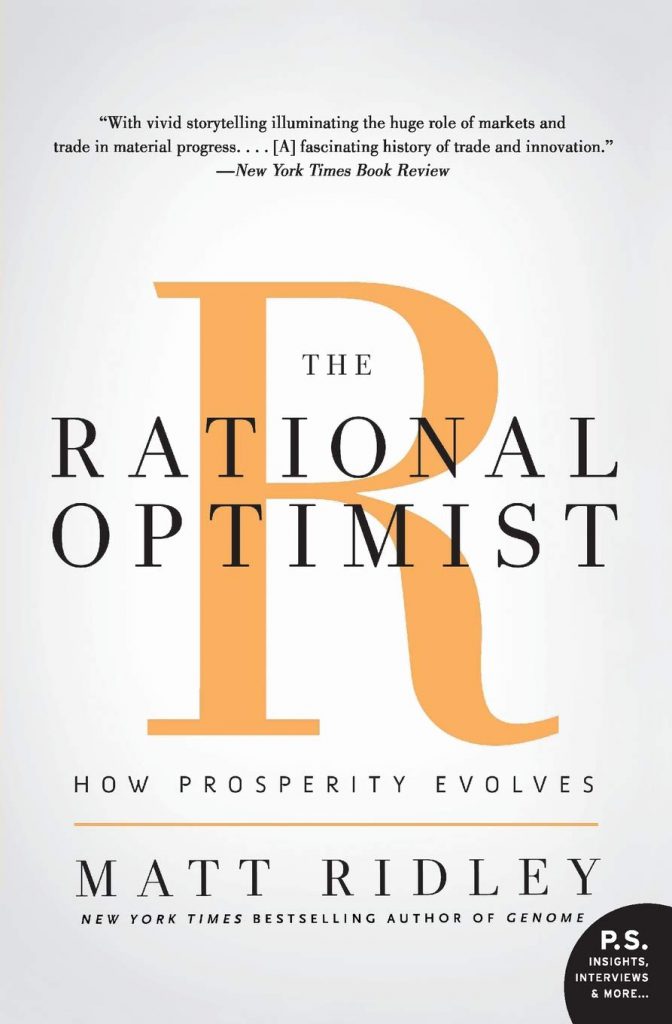
This review is a two for one special: The Rational Optimist: How Prosperity Evolves and How Innovation Works, both by Matt Ridley. One book leads into the other, so it’s a good pairing. Both books make the case that the world doesn’t suck quite as bad as we all thought, and discusses how life can get better through innovation. It’s a nice concept, so let’s start with some rational optimism.
I first encountered The Rational Optimist ten years ago in my college library. I didn’t read it then. The description on the back of the book claimed that “life is getting better at an accelerated rate”. I had to wipe off the back of the book after snorting in disbelief. This was before Covid, otherwise I would have used my ever-present disinfectant wipe. All of my college classes to date would blatantly disagree with the “life is getting better” statement.
It took me ten years and a lot of living before I finally read this book. The book stretches back in time to illustrate what life used to be for people all around the world. If you have ever watched historical movies, taken a history class, read books, or gone to a museum, you probably have an inkling of the comparatively primitive ways people onced lived. Ridley picks out excellent examples across history to demonstrate that quality of life is indeed improving.
At some point I set the book down and considered college. Many of the class discussions centered on why organizations, processes, government, and the interwoven systems of a nation were not working effectively right now. Depending upon the course, there was little discussion about how poorly those same systems worked in the past, if they even existed at all. Over time, there is definitely an improvement. If nothing else, The Rational Optimist made me look at the evolution of prosperity in a different way. Humans can now do more with less using different technology and processes. Consider the way we get around in trains, planes and automobiles. A series of systems were developed to leverage these technologies and diversify access. The system isn’t perfect, but in the grand scheme of things, transportation has come a long way.
Read the book for the deep dive, it’s interesting. But for the sake of time in this review, let’s fast forward to 2020 where Ridley digs into How Innovation Works. This book digs into the process of innovation. Innovation is “the turning of inventions into things of practical and affordable use to people”. Read the Goodreads description for the definition of innovation that got me to read the book. Innovation is necessary for change. It seems obvious, but it’s true.
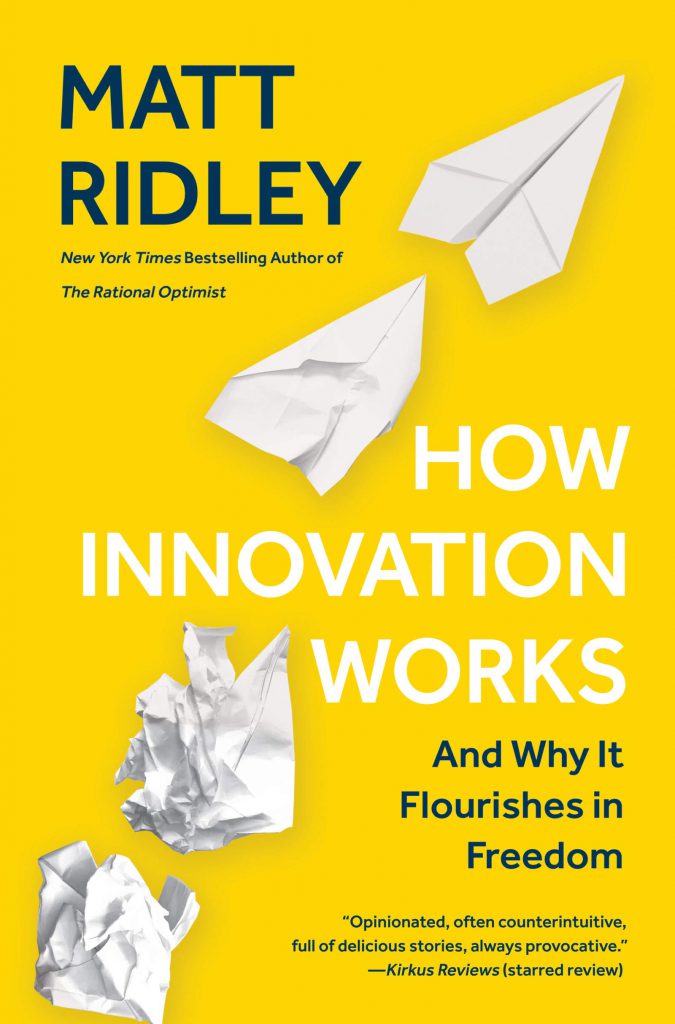
How Innovation Works tells the individual stories of innovations that have changed the world. Yes, the innovation of coffee did change the world. I heat water for coffee in my microwave. When I’m lazy, microwavable dinners save the day. Robots are making microwaves. I bought my microwave online. I find recipes for microwave meals on my smartphone. I find tutorials for robot STEM activities while my meal is cooking. I run on coffee. The world runs on innovation.
That is why schools and libraries everywhere are concentrating deeply on innovation. Think about the maker movement, STEM and STEAM activities. I started looking at the wider world and exploring problems that really need solving. Innovation happens when inventions solve a practical problem people face everyday. This book and others changed the way I look at innovation in the library. Look to the world for opportunities of innovation, then funnel innovation towards what matters most to people. It’s a work in progress.
Long story short: read the books. Good things will happen.
Ridley, Matt. How Innovation Works: And Why It Flourishes in Freedom, 2020. Print.
Ridley, Matt. “Rational Optimist.” New Scientist. 206.2766 (2010): 30-30. Print.
Friday Reads: The Finishing School Series by Gail Carriger
Imagine yourself in lovely Victorian-era England with grand homes, elegant balls, and a large steam powered dirigible school floating by.
Wait…what?
The Finishing School Series by Gail Carriger is an absolutely lovely young adult series that follows one Miss Sophronia Temminnick through her time at Mademoiselle Geraldine’s Finishing Academy for Young Ladies of Quality. Classes include “Fainting in a crowd to attract attention” and “Buying poison and planning dinner on a limited budget”.
Hold on! What?
As the books progress we’re taken out of Mademoiselle Geraldine’s Finishing Academy into the greater world. In Scotland we’re introduced to Sophronias friend Sidhegs pack, her grandfather and uncles, all of whom are werewolves. And to London where the vampires are trying to undermine a plot they just know the Picklemen are trying to run against them.
STOP!!!! WHAT IS GOING ON HERE?!?
I absolutely love this series! The fantasy elements are done in such a way as to seem completely plausible and familiar. This is neither a dystopian set of novels, which seem to be so popular these days, or a “princess in need of rescuing” story. These girls can take care of themselves thank you very much! Not a fan of YA? Most of Gail Carrigers other books all take place in this same lovely world but are decidedly not YA.
Oh! I almost forgot my favorite part – the mechanicals! Simple household type tasks are carried out by these steam and gear-powered robots. Sophronia happens upon one, which happens to look like a dachshund, early on in the series whom she eventually carries around like a purse. Isn’t that just the cutest thing?
Posted in Books & Reading
Tagged #FridayReads, books, Fantasy, Friday Reads, Reading, series
Leave a comment
